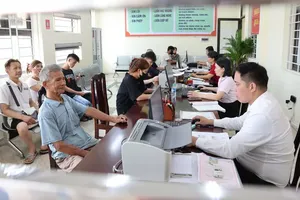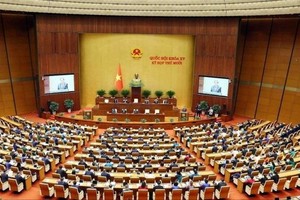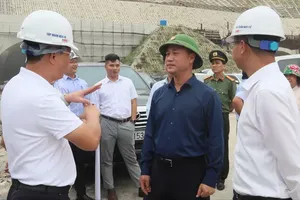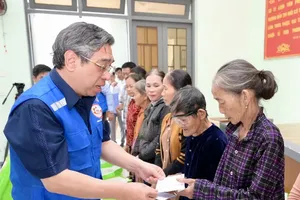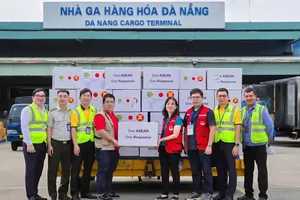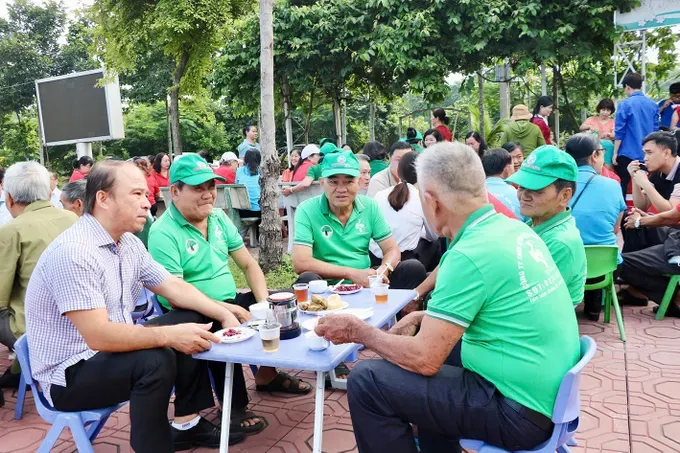
On a weekend morning in late July, with mist still clinging to the leaves, a unique scene unfolded in a local public park in HCMC’s Binh Duong Ward. A dozen tables were arranged in a circle, transforming the public space into a special “open-air office”. At one table, a group of elderly residents engaged in an animated discussion with the ward’s Chairman about the early days of the new administrative model.
Nearby, the Ward’s Party Secretary listened intently as citizens gave feedback on everything from roads and streetlights to garbage collection. In another corner, members of the Party’s Standing Committee chatted with young people and retired officials. It was a vivid tableau of a “Coffee, Dialogue, and Companionship” morning in action.
On a nearby bench, one resident even brought his young child along, watching over them while tuning into the neighborhood’s informal chats. “This approach has really closed the distance between the government and the people. It’s truly commendable”, remarked 77-year-old Nguyen Van Ni, a local resident. His sentiment was widely shared by others who have found this informal setting to be a refreshingly direct channel to their local leaders.
Behind this cozy gathering is real dedication. Than Thi Nguyet, the neighborhood’s Party Cell Secretary, often rises at 5:00 a.m. to prepare sticky rice, boiled corn, and her signature strong-brewed coffee for the event. Having attended nearly every session, she has seen the tangible results firsthand.
One notable success was the repair of DX43 Road. For years, the street served only a few homes, making it impossible to raise public funds for an upgrade. But after the issue was raised at a coffee meeting, it reached the ears of ward leaders. Not long after, construction began.
Chairman Vo Chi Thanh of Binh Duong Ward, who was present from the start of the meeting, shared that with 20 neighborhood blocks, each takes turns scheduling these coffee sessions so leaders can attend. “Since the new two-tier model began, we’ve held over ten of these meetings”, he said. “We see it as a highly effective channel for listening to public concerns, from minor waste issues to major problems. When we hear feedback, we act on it immediately.”
Joining the circle, Ward Party Secretary Nguyen Van Dong, welcomed like family by residents, acknowledged the new model has increased their workload. Still, he said, they remain committed to the coffee meetings, finding it gratifying to resolve issues “on the spot”. This direct approach has drastically reduced formal complaints and boosted public satisfaction.
The success of this innovative approach is significant in Binh Duong Ward, a sprawling 58.1 km² industrial and service hub with a population of over 107,000 and home to seven industrial parks as well as two golf courses. According to the Ward Party Secretary, recent town hall meetings have seen far fewer grievances than in the past.
This method is catching on nationwide. Immediately after the two-tier system launched on July 1, HCMC’s Chanh Hiep Ward started its own “coffee-meeting” program, where leaders not only listen but also proactively share updates on reforms. In Thu Duc Ward, the new Public Administration Service Center was designed with an open layout specifically to host daily “morning coffee with the people”, where top officials are available to chat.
Down in Can Tho City, Phu Loi Ward has kicked off a similar model for both residents and businesses, creating a direct feedback loop to resolve issues in this new era of development.
Even in areas lacking advanced technology, a new service-oriented mindset is taking hold. Lac Duong, a commune in Lam Dong Province, is a prime example. It’s the province’s largest commune at 828 km², with over 80 percent of its population belonging to the K’Ho ethnic minority.
When Lo Mu Ha Moi walked into the local Public Administration Service Center, he was immediately greeted by youth volunteers ready to help. He was fumbling with the online application to register his child’s birth for the first time. The volunteers stepped in, helping him enter the data on their own phones. “They lent me their phone and guided me through the whole process”, he said, beaming. “I was very satisfied.”
This team is one of 126 volunteer youth squads deployed by the Ho Chi Minh Communist Youth Union of Lam Dong Province, comprising over 1,200 members who are providing support across 124 administrative units, prioritizing remote and ethnic minority regions.
This spirit of “working to get the job done, not just to clock out” has become a new mantra. During the initial transition, the provincial Land Registration Office and its branches worked through weekends and after hours to process documents.
For many days, staff at the Public Administration Service Center in Phu Quoc Special Zone of Kien Giang Province worked through lunch and sometimes as late as 8:00 p.m. to clear a backlog of files for residents.
Minister of Home Affairs Pham Thi Thanh Tra stressed on increased responsibilities as well as enhanced public service ethics. The new two-tier local government model demands commune-level civil servants be more professional, responsible, and ethical to better serve citizens and businesses. The Ministry of Home Affairs will push for new training decrees and a culture where effective public service is paramount.
National Assembly Delegate Vuong Thi Huong from Tuyen Quang Province commented that civil servants and public employees in remote regions “keep the flame alive” for the grassroots system by silently dedicating their lives, working under difficult conditions. To encourage them, the Government should adjust policies to better support such committed people in disadvantaged and hazardous areas, which will reinforce trust and stabilize this essential workforce.


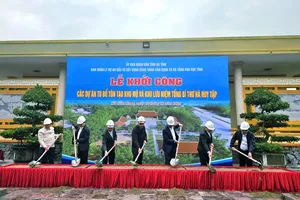
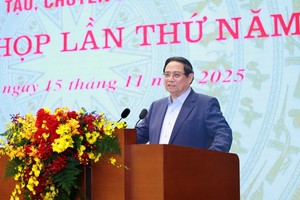
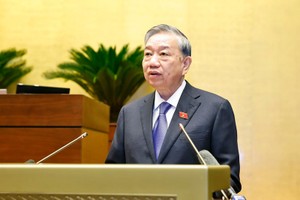
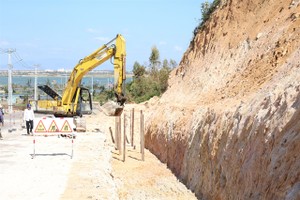
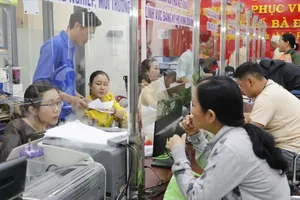



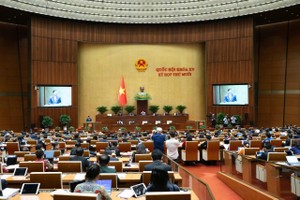


)
